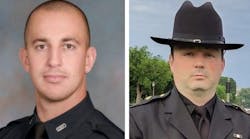Without fanfare, the Philadelphia Police Department has begun posting data on its website about officer-involved shootings -- the focus of a U.S. Justice Department study requested by Commissioner Charles H. Ramsey.
In May, Ramsey asked the Justice Department's Community Oriented Policing Services (COPS) to review the department's handling of incidents when officers shoot at civilians.
Lt. John Stanford, a spokesman for Ramsey, said the posting of the information was not as a result of the COPS review, which also covers all use of force by officers.
"These are all things we'd already been working on before COPS came on board," Stanford said.
The COPS program conducted a similar review for the Las Vegas Metropolitan Police Department. The department there now posts detailed reports on police-involved shootings on its website.
Ramsey's request for the review followed a report in Philly.com in May that said such shootings had increased 50 percent in 2012 over the previous year.
A version of those numbers is now up on the department's website, which went up in mid-November, for anyone to see.
The site offers various statistics dating back to 2007 for categories such as the total number of people shot in Philadelphia, firearms recovered, assaults against police, and officer-involved shootings that either injured or killed a person. There are maps showing where officer-involved shootings took place, as well as the locations of other shootings and other gun crimes, such as robberies.
A flow chart describes the procedural and investigative steps that follow an officer-involved shooting. The site then lists all officer-involved shootings for 2013, providing descriptive summaries and whether there has been any prosecutorial action.
Officer-involved shootings are down this year. From January through the end of September, incidents are down 30 percent compared to 2012.
Samuel Walker, emeritus professor of criminal justice at the University of Nebraska at Omaha, applauded the department's release of shooting data.
"I have nothing but good things to say about what I see," said Walker, author of the book The New World of Police Accountability.
"It's everything that police departments should be doing, including explaining why they are sharing police-involved shootings," Walker said.
On the website, the department states:
"We believe that your trust and confidence in the Philadelphia Police Department will increase as you understand what our officers encounter, how we prepare them for these encounters, and how we hold them accountable for their actions. We are continuously reviewing and improving our practices, especially those that are as important as the use of deadly force."
The numbers for police shootings in prior years on the website differ slightly from what Philly.com reported in May. The differences don't substantially alter the general trends, though, for example, the increase from 2011 to 2012 is closer to 40 percent than the 50 percent Philly.com used.
Police spokeswoman Officer Tanya Little said the statistics on the website are accurate.
David Rudovsky, a longtime civil-rights attorney in Philadelphia, welcomed the release of shooting data on the website, but said the department could do much more.
"I think it is useful for the [police department] to post this information, though aside from the basic facts about time and place there is no further information as to the reason for, or the context of, the shootings," Rudovsky said.
Paul Hetznecker, a lawyer who is suing the department in two police-involved shooting cases, said he does not believe the information posted on the website is part of a serious reform effort.
Hetznecker, who argues that the department suffers deeply rooted problems involving civil-rights violations, expressed suspicion about the motive.
"This is a poorly veiled attempt to justify the status quo -- that is the existing de-facto policy of rationalizing the unlawful use of deadly force by Philadelphia police officers," Hetznecker said.
Both Rudovsky and Hetznecker pointed out that the Las Vegas website provides detailed documentation that reveals its internal review process.
For example, the Las Vegas police posted 64 pages of reports and documents regarding a Nov. 15, 2010, fatal shooting of a man by police.
On the Philadelphia website, a March 7, 2013, shooting that left a suspect dead contains a three-paragraph description of the incident and one word, "declined," to summarize the District Attorney's Office decision not to prosecute.
"Putting up anything is a step forward," said Walker, the criminal justice professor. It can ease the public distrust that results when the police keep secrets.
"The information here is important and the public should know it," he said.
Copyright 2013 - The Philadelphia Inquirer
McClatchy-Tribune News Service


